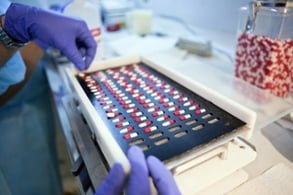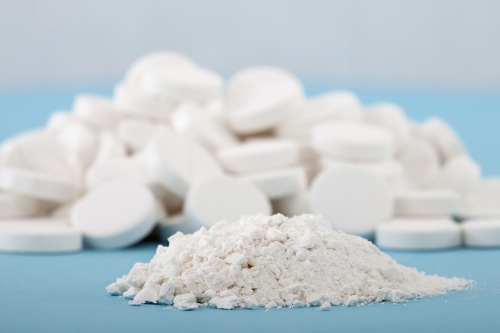In pharmaceutical OSD manufacturing facilities, the ways in which powders, granules, tablets and capsules are moved between production processes can significantly affect productivity. We discuss how taking a lean approach to materials handling can reduce waste, save costs and improve product quality.
What is ‘Lean’ Manufacturing?
The lean philosophy is all about increasing productivity, reducing costs, and improving value for customers. Taking the lean approach means doing things in the most efficient way possible so as not to waste, time, energy or money. Use the lean philosophy when looking at the design of pharmaceutical manufacturing plant.
In the crowded pharmaceutical oral solid dosage (OSD) product marketplace, taking a lean approach to materials handling can reduce inefficiency and help manufacturers to find that competitive edge.
What is materials handling?
Let’s take the example of pressing tablets: a mixture of ingredients is fed into the tablet press at one end, and tablets of a uniform shape and size emerge at the other. However, this process is not isolated. Before reaching the tablet press, the ingredients must be measured, dispensed and blended, and  once the tablets have been made, they then need to be packaged into bottles or blister packs containing the correct number of units.
once the tablets have been made, they then need to be packaged into bottles or blister packs containing the correct number of units.
Materials handling refers to the ways in which materials are fed from one part of the overall manufacturing process to another.
There are 3 main options:
- Manual handling
Individual ingredients might be discharged into a tub or drum and physically moved to the tablet pressing area, where the mixture would then be hand-tipped into the compression equipment.
This is certainly an easy way to transfer the materials, but it’s not very lean. The disconnect between each step creates opportunities for waste, e.g.:
- Powder residue is inevitably left behind in the containers – valuable wasted ingredients!
- Containers must be cleaned before reuse to avoid contamination, thus wasting water, cleaning materials, time and effort.
- Physically moving materials by hand wastes time and energy, and creates possible health and safety risks.
- Continuous processing
The need for materials handling can be almost completely removed by directly coupling one part of the manufacturing process to the next. This solves problems of waste, such as those described above, but is not truly lean because:
- In practice, it is difficult to achieve a completely continuous process; batch processes, such as blending, are almost always involved.
- The overall process can only go at the rate of the slowest step.
- If a fault occurs, or cleaning is required, the entire production line must be shut down, even if the problem affects only a small part of it.
With continuous processing, it is also difficult to expand the capacity of a given production line. For example, if you wanted to make different sized blister packs of a particular tablet, you would need to install completely separate lines to create the different SKUs.
- Intermediate Bulk Containers (IBCs): the best of both worlds
With specialized IBCs, the production line can be ‘continuously uncoupled’, in other words, while individual steps of the overall process remain separate, larger scaled IBCs are used to move materials between them, giving more product supply with each container.
IBCs greatly increase the lean productivity of a process by:
- Reducing the number of containers required to move materials;
- Eliminating many of the cleaning steps required in a manual process;
- Eradicating potential contamination by keeping the product within a sealed unit;
- Reducing wasted product residue, since IBCs are designed to achieve complete discharge;
- Enabling each part of a production to operate at its optimum speed;
- Allowing parallel processing of different SKUs to take place.
Posted by
Matt BaumberTopics:
Pharmaceutical
